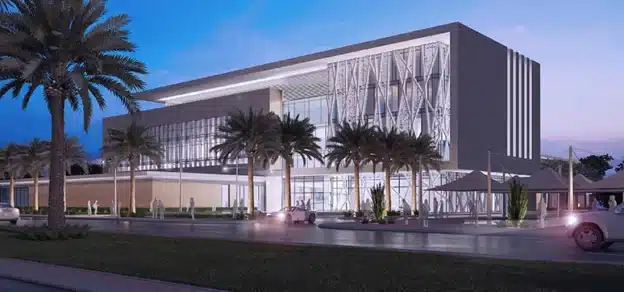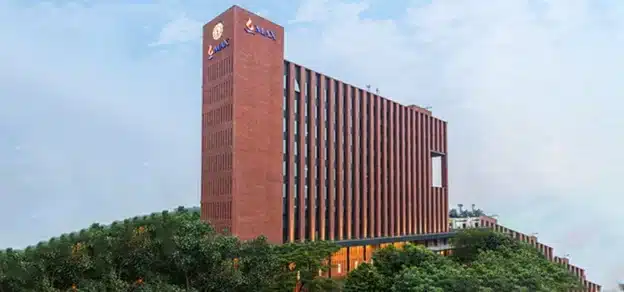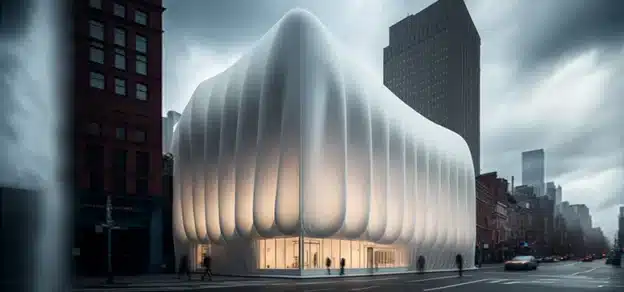Full glazing in tall residential buildings is not necessary, and likely to cause overheating problems, according to BuroHappold’s experts. “You don’t need that much glass to deliver daylight. Clever architects will find a way of delivering daylight without storing up problems for the future,” said Duncan Price, partner.
Managing Glazing & Shade Ratios in Tall Buildings
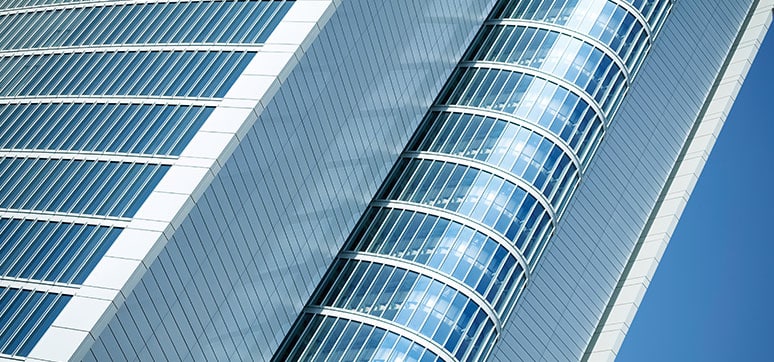
Jon Gregg, senior sustainability engineer, agrees that too much glazing can be a problem. He suggests that tall building developers should look back to more traditional designs when designing daylighting for tall buildings, “In UK Victorian design, the trend was large panes of glass at the bottom of the building, with smaller panes at the top. Essentially, modern design has flipped this principle. Top floors are typically where rents are higher and tenant expectation of ‘penthouse living’ exists. Designers are responding to this with more glass. This can have negative knock impacts on overheating, drive the need for air conditioning and provide poor energy performance”.
This recommendation is just one of the learnings that emerge from the analysis report, Energy, Daylight and Overheating: Study in Tall Buildings. BuroHappold was commissioned by the Old Oak Common Development Corporation (OPDC) in London, to test the technical feasibility and financial implications of meeting the Mayoral targets for passive energy performance in tall buildings. These form part of the masterplan for the Old Oak and Park Royal area in West London. BuroHappold’s team, headed up by Jon Gregg, Duncan Price and Giulia Escher, modelled 69,000 flats and houses and 17,000 commercial spaces, optimising all the possible permeations of many different designs and creating an extremely large dataset. This huge study into tall building optimisation in terms of environmental design is not only of vital importance to future UK government policy around tall building design, but also for future project work at BuroHappold.
“What we are doing now is using the dataset from this study to drive new learning into our other projects,” said Jon. “The first thing I do when starting a new project is provide a design principles ‘cheat sheet’ to the architects and developer. This outlines the principles’ impact on daylight, energy and overheating, as well as giving details of different design measures to be applied, including glazing ratios, fenestration approaches and balcony positions”.
Jon explains that by exploring each of the client’s designs in conjunction with their impact on energy performance, overheating and daylighting, clients can then assess and adjust design before any modelling begins, “What we are finding now is that we are not trying to overcome problems through over-designed solutions, we have mitigated them before they occur. We understand how the building will perform, and we are guiding architects and clients to the right solutions”.
Bigger Units at Risk of Overheating
-
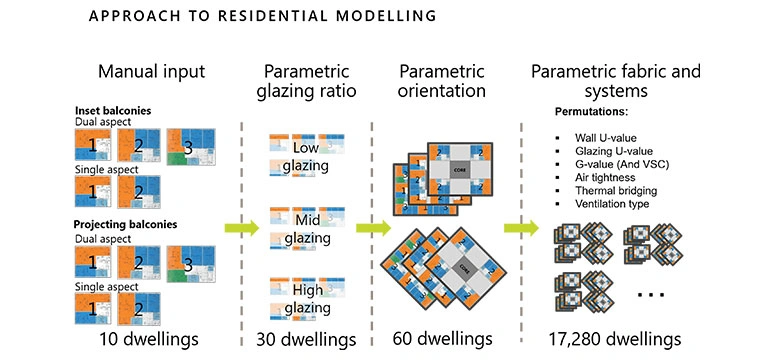
Cheat sheet design
Cheat sheet page: While starting a new project, a ‘cheat sheet’ of design principles’ is provided to the architects and developer. This outlines the principles’ impact on daylight, energy and overheating, as well as giving details of different design measures to be applied, including glazing ratios, fenestration approaches and balcony positions
Developers need to think carefully about where different unit types are placed within a tall building. According to the OPDC findings, one or two bedroom apartments have a lower overheating risk than three bedroom units. “Three-bed units have higher occupancy and therefore higher internal heat gains, so it is actually quite hard to avoid them overheating,” explained Jon. “The southwest corners are always the highest risk location. So best to try and avoid those locations for the high occupancy residential units”.
-
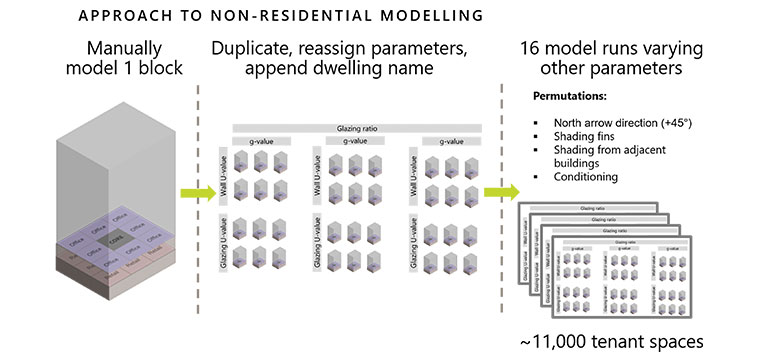
Non residential process
The report concludes that, “The key drivers to mitigate overheating risk are the positioning of highrisk dwellings in locations of low solar exposure….South-west facing glazing should be avoided where possible”.
Projecting Balconies Perform Better
Positioning of balconies was important when considering overheating, according to Jon’s research, but perhaps not as significant as other factors such as glazing ratios and ventilation. According to the report, “The impact of inset/projecting balconies and shaded/exposed locations was found to be less significant than other factors,” when assessing overheating risk.
“In general, projecting balconies perform better than inset balconies. This is because dwellings with inset balconies have a greater façade area….the resulting increase in glazed area for an inset balcony is more detrimental for overheating than the additional shading afforded by insetting the balcony.”
Reducing the Need for Air- Conditioning
-
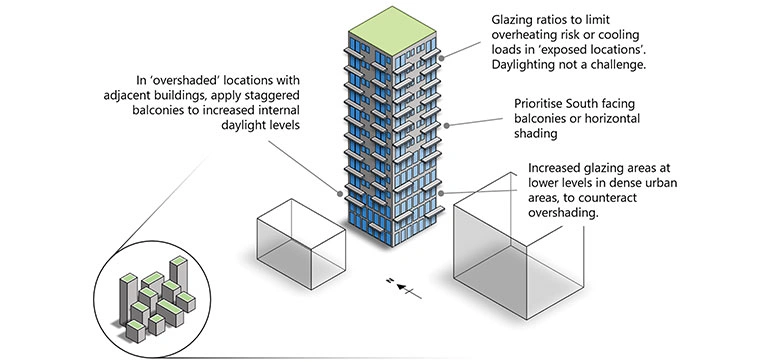
Non residential process
Whilst air-conditioning is needed in many tall buildings, major development proposals should focus on reducing a building’s reliance on it, according to the report. Instead, they need to focus on:
1. Energy efficient design
2. Reducing the amount of heat entering a building through orientation, shading, albedo, fenestration, insulation and the so it is actually quite hard to avoid them overheating,” explained Jon. “The southwest corners are always the highest risk location. So best to try and avoid those locations for the high occupancy residential units”.
The report concludes that, “The key drivers to mitigate overheating risk are the positioning of high risk dwellings in locations of low solar exposure….South-west facing glazing should be avoided where possible”.
3. Manage the heat within the building through exposed internal thermal mass and high ceilings
4. Providing passive ventilation, mechanical ventilation and active cooling systems
In short, energy efficiency in tall buildings is complex and challenging, with many factors affecting heating, cooling and carbon. As Duncan said, “You have to work really hard. to optimise performance of energy – carbon, overheating and daylight. There are sometimes trade-offs to be made”.
-

Mechanical ventilation in buildings
With the wealth of new data now available to BuroHappold’s sustainability experts from the OPDC report, we are now in the very best position to advise, plan and build high performing, energy efficient tall buildings, for every client.
(As compiled by Victoria Bentley, copywriter, BuroHappold)






